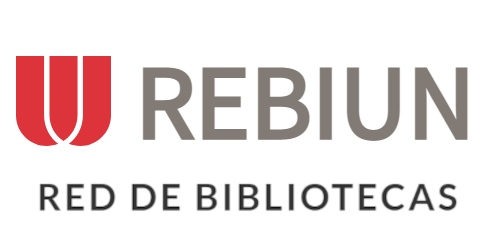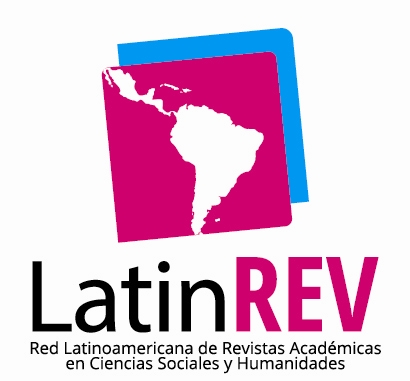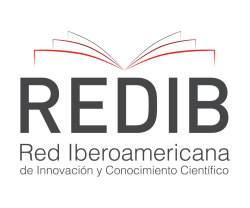English Language Teaching Strategies in Hybrid Environments: Integrating Technology and Face-to-Face Instruction
Resumen
Este estudio investiga las estrategias empleadas en la enseñanza del inglés (ELT) en entornos de aprendizaje híbrido en escuelas secundarias públicas ecuatorianas, centrándose en la integración de la tecnología y la instrucción presencial. Mediante un diseño cualitativo de estudio de caso múltiple, se recopilaron datos de cinco escuelas secundarias en diferentes provincias, involucrando a 110 estudiantes y cinco docentes de inglés. Se utilizaron observaciones en el aula, entrevistas a docentes y cuestionarios a estudiantes para recopilar información sobre las prácticas de enseñanza, la participación estudiantil y los desafíos del aprendizaje híbrido. Los resultados revelan que la instrucción híbrida, cuando se apoya en una infraestructura adecuada y la capacitación docente, fomenta la participación estudiantil y facilita el acceso a materiales de aprendizaje auténticos. Sin embargo, desafíos significativos como la conectividad limitada, la falta de dispositivos digitales y la preparación desigual de los docentes dificultan una implementación consistente. Los estudiantes reportaron un mayor rendimiento académico y motivación durante las sesiones presenciales, mientras que la instrucción en línea resultó beneficiosa para el desarrollo de la autonomía y la alfabetización digital. Los hallazgos subrayan la importancia de las estrategias sensibles al contexto, el desarrollo profesional docente y el acceso equitativo a la tecnología para optimizar las prácticas híbridas de ELT. Este estudio ofrece implicaciones prácticas para la planificación curricular y el desarrollo de políticas destinadas a mejorar la enseñanza del inglés en formatos combinados en las escuelas públicas ecuatorianas.
Descargas
Citas
Aydın, M., & Genç, Z. (2024). ACADEMICIANS’ VIEWS ON FOREIGN LANGUAGE TEACHING: ONLINE DISTANCE-LEARNING VERSUS FACE-TO-FACE INSTRUCTION. Encuentro Journal, 32. https://doi.org/10.37536/ej.2024.32.2448
Barnhart, C. R., Li, L., & Thompson, J. (2022). Learning whiplash: Chinese College EFL learners’ perceptions of sudden online learning. E-Learning and Digital Media, 19(3). https://doi.org/10.1177/20427530211022922
Cao, C. (2023). A New Cloud with IoT-Enabled Innovation and Skill Requirement of College English Teachers on Blended Teaching Model. International Journal on Recent and Innovation Trends in Computing and Communication, 11(6 s). https://doi.org/10.17762/ijritcc.v11i6s.6816
Cechova, I., Skybova, D., & Koukalova, R. (2018). Blended learning strategies for successful language acquisition. Proceedings of the European Conference on E-Learning, ECEL, 2018-November.
Dang, F. (2024). Exploring a hybrid online and offline English teaching model based on model hierarchy analysis. Applied Mathematics and Nonlinear Sciences, 9(1). https://doi.org/10.2478/amns.2023.2.00487
Danylchenko-Cherniak, O. (2023). Providing Creativity Ineducational Enviroment During the Epochofartificial Intelligence: Philological Perspectives. Fìlologìčnì Traktati, 15(2). https://doi.org/10.21272/ftrk.2023.15(2)-5
Cango-Patiño, A. I., & Bravo-Reyes, M. I. (2020). La enseñanza del inglés en las instituciones educativas públicas del Ecuador en la era digital. Polo Del Conocimiento: Revista Científico - Profesional, ISSN-e 2550-682X, Vol. 5, No. 3 (MARZO 2020), 2020, Págs. 51-68, 5(3).
Etae, S., Krish, P., & Hussin, S. (2017). Analyzing Politeness Strategies in an Online Platform for Thai Efl Learners. E-Bangi : Journal of Social Sciences and Humanities, 12(2).
Fanni, F. 1, Rega, I. 1, Cantoni, L. 1, Ezemenaka, E., Ravjee, N., Sankey, M. D. 1, Birch, D. 1, Gardiner, M. W. 1, Brandon, E., Joshi, M., Chugh, R., Eyitayo, O. T., Giannini-Gachago, D., Seleka, G., Rena, R., Carr, T., Czerniewicz, L., Marshall, S. S. S., Taylor, W. W. W., … Sparks, P. (2005). Distance learning across continents: What is a “Traditional Learner” anyway? International Journal of Education & Development Using Information & Communication Technology, 3(3).
Hamid, F., Rinawati, D., Mahrudin, M. A. F. S., Husna, N., Hidayat, D. N., & Mursyid, A. M. M. (2022). Teaching Strategies in EFL Hybrid Classroom : A Case Study in a Junior High School. IDEAS: Journal on English Language Teaching and Learning, Linguistics and Literature, 10(1). https://doi.org/10.24256/ideas.v10i1.2522
Hirata, Y., & Hirata, Y. (2008). Japanese students’ attitudes towards hybrid learning. Lecture Notes in Computer Science (Including Subseries Lecture Notes in Artificial Intelligence and Lecture Notes in Bioinformatics), 5169 LNCS. https://doi.org/10.1007/978-3-540-85170-7_39
Hutchinson, M., & Hadjioannou, X. (2011). Better serving the needs of limited English proficient (LEP) students in the mainstream classroom: Examining the impact of an inquiry-based hybrid professional development program. Teachers and Teaching: Theory and Practice, 17(1). https://doi.org/10.1080/13540602.2011.538499
Illahibaccus-Sona, S. B. (2023). A Qualitative Phenomenological Investigation of Pre-university English as a Second Language Learners’ Experiences in Malaysia. Journal of English Language Teaching and Applied Linguistics, 5(2). https://doi.org/10.32996/jeltal.2023.5.2.23
Ilyas, K., Weda, S., & Halim, A. (2023). A Study on Teacher Professionalism in Teaching English After Pandemic. ELT Worldwide: Journal of English Language Teaching, 10(1). https://doi.org/10.26858/eltww.v10i1.49151
Khatib, A. J., & Riady, Y. (2023). Navigating Hybrid Language Learning Realities: Students’ Views on Workload & Time Allocation during Covid-19. REiLA : Journal of Research and Innovation in Language, 5(2). https://doi.org/10.31849/reila.v5i2.13538
Klimova, B., & Pikhart, M. (2021). New advances in second language acquisition methodology in higher education. In Education Sciences (Vol. 11, Issue 3). https://doi.org/10.3390/educsci11030128
Li, Z. (2024). A Study on Multiple Interactive Teaching Models of English in Universities under Information Technology Environment. Applied Mathematics and Nonlinear Sciences, 9(1). https://doi.org/10.2478/amns.2023.2.00031
Lin, L.-F., Bao, G., Briggs, J. G., Wang, K.-H. (Isobel), Sundqvist, P., Wikström, P., Okamoto, M., Li, H., Lorenzo-Dus, N., Huang, L.-S. L., Lin, C., Yamamoto, Y., Juffs, A., Friedline, B. E., Wilcox, A., Medina, A., Hirschel, R., Fritz, E., van Zeeland, H., … Sussex, R. (2014). News and notes. System, 41(3).
Lozano-Lozano, M., Fernández-Lao, C., Cantarero-Villanueva, I., Noguerol, I., Álvarez-Salvago, F., Cruz-Fernández, M., Arroyo-Morales, M., & Galiano-Castillo, N. (2020). A blended learning system to improve motivation, mood state, and satisfaction in undergraduate students: Randomized controlled trial. In Journal of Medical Internet Research (Vol. 22, Issue 5). https://doi.org/10.2196/17101
Mirzaei, A., Shafiee Rad, H., & Rahimi, E. (2024). Integrating ARCS motivational model and flipped teaching in L2 classrooms: a case of EFL expository writing. Computer Assisted Language Learning, 37(5–6). https://doi.org/10.1080/09588221.2022.2068614
Ngo, H. T. P. (2010). Introduction to Establishing a Hybrid Learning Course : An Interactive PDF Module for the Vietnamese Teachers of English at CEFALT 1. TCC 2010: Educational Technology Master’s Paper.
Omar, A. B., & Taib, N. F. B. M. (2022). ONLINE DISCUSSION STRATRGIES TO FACILITATE STUDENTS DISCUSSION FOR A SPECIFIC ACADEMIC PURPOSES COURSE AT A TECHNICAL ENGINEERING UNIVERSITY. FRASA: English Education and Literature Journal, 3(2). https://doi.org/10.47701/frasa.v3i2.2309
Papadima-Sophocleous, S., Bradley, L., Thouësny, S., & (France), R. net. (2016). CALL Communities & Culture: Short Papers from EUROCALL 2016 (23rd, Limassol, Cyprus, August 24-27, 2016). In Research-publishing.net.
Pokrovskaya, E. M. (2020). The University As An Accelerator Of Lifelong Learning Practices (Based On ELT). https://doi.org/10.15405/epsbs.2020.12.03.44
Ruday, S., & Cassidy, J. (2021). Remote Teaching and Learning in the Middle and High ELA Classroom: Instructional Strategies and Best Practices. In Remote Teaching and Learning in the Middle and High ELA Classroom: Instructional Strategies and Best Practices. https://doi.org/10.4324/9781003156338
Ruday, S., & Jacobson, T. M. (2021). Remote teaching and learning in the elementary ELA classroom: Instructional strategies and best practices. In Remote Teaching and Learning in the Elementary ELA Classroom: Instructional Strategies and Best Practices. https://doi.org/10.4324/9781003156352
Sana Niazi. (2023). Weaving a Bond between the Teacher and the Taught: Using ‘Voice Thread’ as Digital App for ESL Learners. Shanlax International Journal of English, 12(S1-Dec). https://doi.org/10.34293/rtdh.v12is1-dec.100
Sánchez-Hernández, A., & Barón, J. (2022). Teaching second language pragmatics in the current era of globalization: An introduction. Language Teaching Research, 26(2). https://doi.org/10.1177/13621688211064931
Yuan, L. (2022). Research on English Hybrid Assisted Teaching System Using Contextual Support of R-CNN. Wireless Communications and Mobile Computing, 2022. https://doi.org/10.1155/2022/5358546
Zheng, C. (2021). Research on Online and Offline Hybrid Teaching of Higher Vocational Professional English Based on Network Environment. Journal of Physics: Conference Series, 1744(3). https://doi.org/10.1088/1742-6596/1744/3/032047
Derechos de autor 2025 Roció del Carmen Rodríguez Rueda, Deysi Teresa Vite Guzman, Marjorie Carolina Alvarado Romero, Linda Michel Correa Riofrio, Nelly Maribel Jaramillo Jara

Esta obra está bajo licencia internacional Creative Commons Reconocimiento 4.0.











.png)




















.png)
1.png)


